Conjunctivitis (Pink Eye) - Symptoms, Causes and Treatment
07-04-2024
What is Conjunctivitis (Pink Eye)?
Conjunctivitis, also known as pink eye, is a common eye condition that occurs when the thin layer of tissue covering the white part of the eye and the inner surface of the eyelids becomes inflamed. This inflammation can cause the eye to appear pink or red, hence the name pink eye. It is important to seek treatment from an eye care professional if you suspect you have conjunctivitis in order to prevent any potential complications and to ensure proper management of the condition.What Are The Causes Of Conjunctivitis (Pink Eye)?
Conjunctivitis, or pink eye, can be caused by a variety of factors such as viruses, bacteria, allergies, or irritants. Viral conjunctivitis is typically associated with the common cold or other upper respiratory infections, while bacterial conjunctivitis can be caused by different types of bacteria such as staphylococcus or streptococcus. Allergic conjunctivitis is triggered by allergens such as pollen, pet dander, or dust mites, leading to inflammation of the conjunctiva. Irritants like smoke, chlorine in swimming pools, or harsh chemicals can also cause pink eye. Identifying the underlying cause of conjunctivitis is important in determining the appropriate treatment and management plan for the patient.What Are The Risk Factors For Conjunctivitis (Pink Eye)?
Risk factors for conjunctivitis include coming into contact with someone who has the infection, poor personal hygiene practices such as not washing hands frequently, wearing contact lenses for extended periods of time without proper cleaning, exposure to allergens or irritants, and having a weakened immune system. Additionally, individuals who work in environments where they are exposed to chemicals or other irritants may be at a higher risk for developing conjunctivitis. It is important to be mindful of these risk factors in order to take necessary precautions to prevent the spread of the infection.What Are The Symptoms Of Conjunctivitis (Pink Eye)?
Common symptoms of conjunctivitis, also known as pink eye, include redness in the white of the eye or inner eyelid, watery or thick discharge that can crust over the eyelids, itching or burning sensation in the eyes, blurred vision, increased sensitivity to light, and a feeling of grittiness in the eyes. Some individuals may also experience swelling of the eyelids and a feeling of discomfort or irritation in the eyes. It is important to seek medical attention if you are experiencing any of these symptoms to receive an accurate diagnosis and appropriate treatment.How is Conjunctivitis (Pink Eye) Diagnosed?
Conjunctivitis, commonly known as Pink Eye, is diagnosed through a comprehensive eye examination conducted by an optometrist. During the examination, the optometrist will assess the patient's medical history, symptoms, and any recent exposure to allergens or irritants. The optometrist will then carefully examine the eyes using a slit lamp microscope to evaluate the appearance of the conjunctiva and any discharge present. In some cases, a sample of the discharge may be taken for further analysis to determine the specific cause of the conjunctivitis. By conducting a thorough examination, the optometrist can accurately diagnose Conjunctivitis and recommend the appropriate treatment.How is Conjunctivitis (Pink Eye) Treated?
Conjunctivitis, commonly known as Pink Eye, can be treated with a variety of options depending on the cause of the infection. Treatment may include prescription eye drops or ointments to help reduce inflammation and relieve symptoms. In cases of bacterial conjunctivitis, antibiotics may be prescribed to clear up the infection. For viral conjunctivitis, treatment typically involves managing symptoms and allowing the infection to run its course. In some cases, warm compresses and artificial tears may be recommended to help soothe irritation and discomfort. It is important to follow the guidance of an eye care professional when seeking treatment for Conjunctivitis to ensure proper care and management of the infection.Is There A Cure For Conjunctivitis (Pink Eye)?
There is no specific cure for Conjunctivitis (Pink Eye) as it can be caused by different factors such as viruses, bacteria, or allergens. However, treatment typically involves addressing the underlying cause and managing symptoms to help alleviate discomfort and promote healing. This may include using prescription eye drops, ointments, or oral medications as well as practicing good hygiene to prevent spreading the infection. It is important to consult with an eye care professional for an accurate diagnosis and appropriate treatment plan tailored to individual needs.How Can Conjunctivitis (Pink Eye) Be Prevented?
Conjunctivitis, or pink eye, can be prevented by practicing good hygiene habits. This includes washing your hands frequently, especially before touching your eyes or face. Avoid sharing items like towels, washcloths, and makeup with others to reduce the spread of infection. If you or someone in your household has pink eye, be sure to disinfect commonly touched surfaces and objects to prevent the spread of the infection. Additionally, avoid rubbing your eyes and try to avoid touching your face with unwashed hands to reduce the risk of transferring bacteria or viruses to your eyes. Regularly cleaning and replacing contact lenses and their cases can also help prevent the development of conjunctivitis.Although most cases of pink eye go away without a doctor's care, if you are experiencing any severe symptoms, or if your symptoms do not go away on their own, you may require emergency eye care. Schedule an eye exam with an optometrist today!
Schedule An AppointmentFYEyes Blog Posts
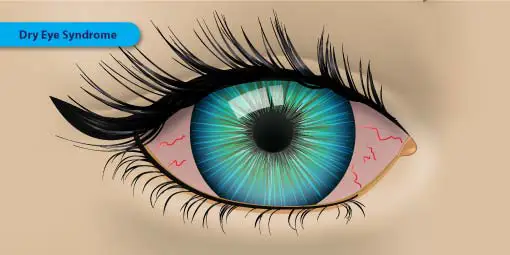
Dry Eye Syndrome - Symptoms, Causes and Treatment
Dry Eye Syndrome is a common eye condition that occurs when the eyes do not produce enough tears or when the tears evaporate too quickly.

Blepharitis - Symptoms, Causes and Treatment
Blepharitis is a common and chronic inflammation of the eyelids that can affect people of all ages.


Corneal Abrasion - Symptoms, Causes and Treatment
A corneal abrasion is a scratch or injury to the outermost layer of the cornea, which is the clear, dome-shaped surface that covers the front of the eye.

Adult Eye Exams
Our advanced eye exams consist of 25+ modern tests and digital scans to assess eye health, function, and visual acuity.

Child Eye Exams
Give your child a clear future with an annual eye exam from our experienced Edmonton optometrists.

Senior Eye Exams
Maintain your vision through your golden years with gold standard eye care from the optometrists at our Edmonton eye clinic.

Contact Lens Eye Exams
Our eye exams for contact lens wearers include test and digital scans to assess eye health, function, visual acuity, and lens fit.
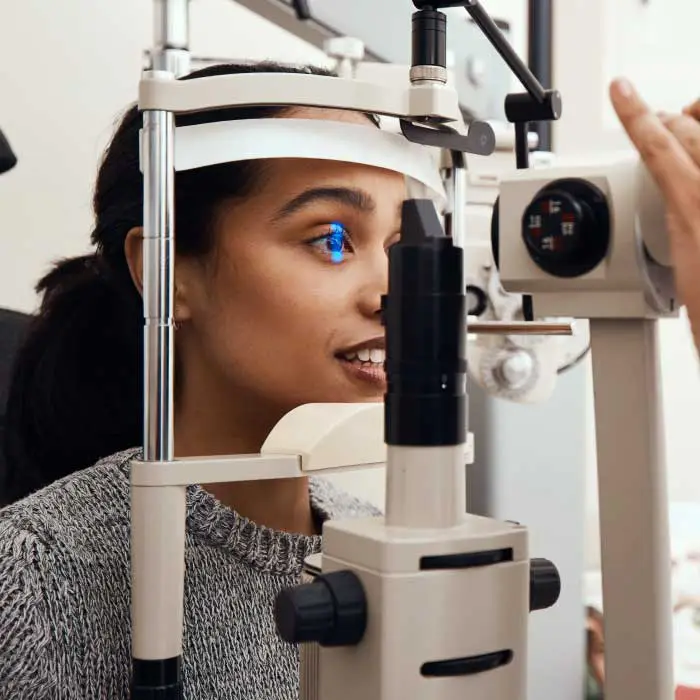
Diabetic Eye Exams
Managing diabetes requires regular eye exams to ensure that diabetes is not causing irreversible vision loss.
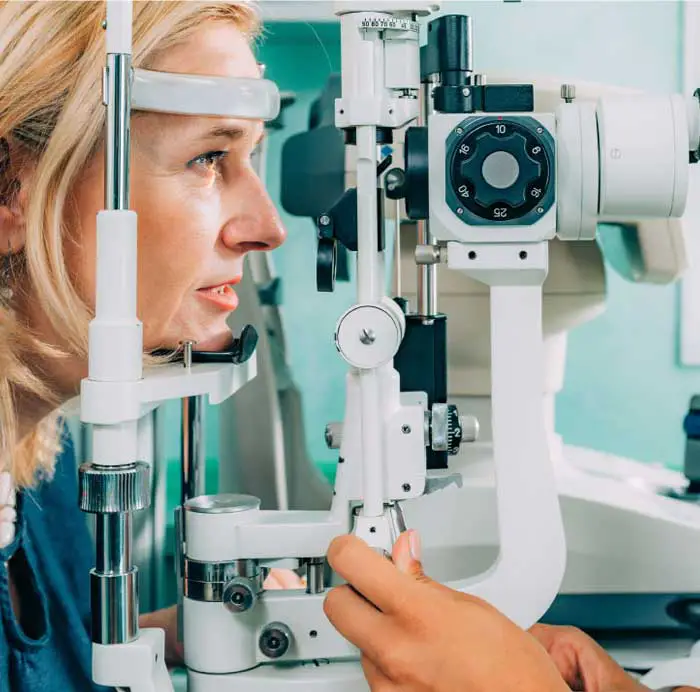
Dilated Eye Exams
Dilating the eyes enables our Edmonton optometrists to see more of the eye so that you many never see less.
Our Edmonton Eye Exams Are Comprised Of 4 Phases Of Evaluation

1. Eye Exam Pre-Testing
Corneal Thickness | Intraocular Pressures | Visual Field
Pre-testing is a detailed process that gathers all necessary information for the optometrist in advance of the optometrist-administered eye examination. This process involves completing a detailed patient history, as well as a series of standard tests. Pre-testing is an essential part of the comprehensive eye exam process, providing valuable information and visuals for both the optometrist and the patient.
More About Pre-Testing »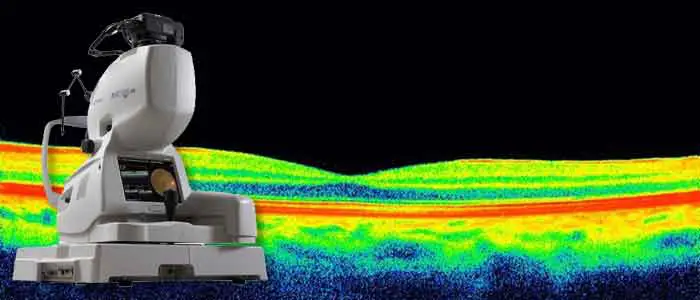
2. Advanced Diagnostic Testing
Retinal Photography, OCT, Topography
eye-deology Vision Care differentiates itself from other clinics by having the most advanced modern diagnostic specialty testing equipment. Specialty equipment, such as a wide-angle high-resolution retinal imager, Optical Coherence Tomography (OCT), Humphrey Visual Field Analyzer and corneal topographer, ensures that patients receive the best comprehensive eye care.
More About Advanced Testing »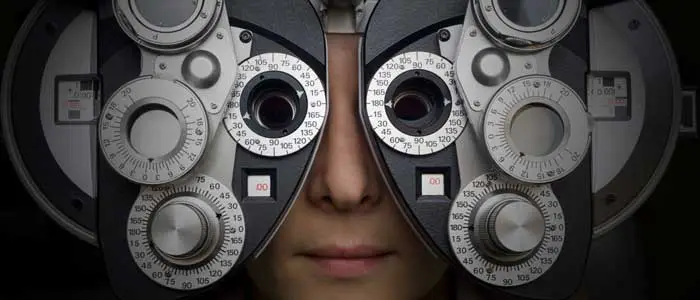
3. Optometrist Examination
Health Assessment & Disease Diagnosis
eye-deology Vision Care Edmonton optometrists perform a multitude of tests and assessments to evaluate ocular health, eye coordination, and visual acuity. In addition, they also evaluate the results of the tests and scans performed during pre-testing. As part of patient education, our optometrists also take the time to show and explain results to patients.
More About Doctor Exam »
4. Eye Glass Consult
Prescription | Lens Selection | Digital Fitting
If you require corrective lenses to improve your vision, our licensed opticians will customize their fit to your unique attributes, needs, lifestyle, and budget. Our opticians are happy to provide you with information about the latest eyeglass frame and lens technologies available so you can make informed decisions and begin seeing and looking your best.
More About Eyewear Consult »